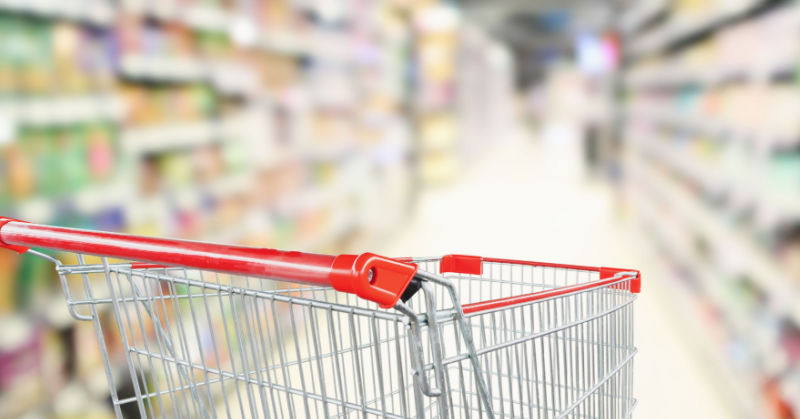The latest release of the Consumer Price Index (CPI) report from the U.S. Bureau of Labor and Statistics showed that the food index has increased by 10.9% compared to last year. The CPI measures the change in prices paid by consumers of goods and services in urban/metropolitan areas. But head over to your local grocery store and you can see it directly – food is much more expensive now!
As cost-of-living soars due to inflation and other COVID-related influences, state governments have been facing increasing calls to address the situation. Food is an essential item. Not just access to food, but more specifically, access to nutritious food is considered essential these days. It is commonly understood that anything supporting access to good nutrition (like fruits and vegetables) increases the quality of life. Tax professionals advising clients that sell grocery staples need to understand the political and economic rationale behind these changes so they can properly account for what’s already changed and prepare for what’s to come.
How states are approaching sales tax on food
Food (specifically, groceries) is no stranger to receiving policy-backed reasoning for reducing or even eliminating the sales and use taxes imposed upon it. In November 2014, the Navajo Nation (encompassing portions of Utah, Arizona and New Mexico) was the first within the U.S. to establish a tax on junk food while exempting certain healthy foods.
Recently, several states have responded to these calls by passing legislation to ease the financial burden. For example, Illinois suspended the tax on groceries (which was already at a reduced rate) for one year. Tennessee implemented a month-long sales tax holiday on “food and food ingredients” this year in August – specifically excluding “prepared food.” Virginia will be further reducing the rate on food for home consumption from 2.5% to 1% beginning January 1, 2023. Kansas is implementing a phased approach, reducing the rate from 6.5% to 4% on January 1, 2023, then to 2% by January 1, 2024, and finally a complete exemption by January 1, 2025.
Other states also put in efforts to pass similar legislation, though they are either still pending or died pursuant to adjournment:
- Alabama (HB 173 – to exempt “food” starting 2023)
- Hawaii (HB 638 – to exempt “food and food ingredients”)
- Idaho (HB 448 – to exempt food eligible for purchase with SNAP)
- Oklahoma (HB 1012 – to exempt all retail sales of food and food ingredients sold for human consumption off the premises where sold)
- South Dakota (HB 117 – to exempt “food and food ingredients”)
- Utah (HB 165 – to exempt “food and food ingredients” but only from state sales and use tax)
- Virginia (HB 90 – to exempt food purchased for human consumption beginning in 2023).
Keep in mind that tax on grocery food is considered regressive. It disproportionately impacts lower-income taxpayers as they spend a larger portion of their income on groceries as opposed to higher-income taxpayers. For example, a higher-income taxpayer need not spend as much of their income for the same amount of groceries.
Additionally, it is commonly understood that the amount spent on groceries does not scale up depending on the income of a taxpayer – an individual making 10 times more income than a lower-income person does not necessarily buy 10 times more groceries. Thus, the burden on the lower-income taxpayer can be greater than on a higher-income taxpayer.
But this might not be the best way to help lower-income taxpayers.
Recently, the Tax Foundation published a report discussing flaws in this line of logic. First, programs such as Supplemental Nutrition Assistance Program (SNAP)already exist, which are specifically aimed to increase affordability/ease the financial burden on groceries for lower-income taxpayers.
Second, the report suggests that higher-income individuals tend to purchase more and higher quality groceries. Often, lower-income working families may find it more worth their money and time to purchase “prepared foods” (e.g., sandwiches to-go, rotisserie chicken, etc.) rather than purchase raw ingredients and cook at home.
Unfortunately, unlike groceries, states tend to tax prepared food. These same working families may also tend to frequent “quick serve” restaurants, where they could end up paying both sales tax and meals tax depending on jurisdictional requirements. So, reducing/eliminating the tax on groceries benefits the higher-income taxpayer, and the lower-income taxpayer still pays tax on prepared food. The result is that the lower-income individual still suffers a greater burden on purchasing food than the higher-income taxpayer.
Third, the Tax Foundation notes that focusing only on groceries does not give the entire picture of general cost-of-living expenditures. Lower-income households may spend more of their portion of income on household goods as compared to groceries, which themselves are most likely taxable. Therefore, although the tax reduction/exemption is intended to ease the burden on groceries, it does not significantly impact lower-income taxpayers positively because they are spending more on other goods anyway.
And so, reducing/eliminating the tax on groceries does not fully aid the targeted recipients. Further, an Economic Research Report published by the USDA last year found that there was no clear relationship between altering grocery taxes and purchases of food for at-home consumption among SNAP recipients. Basically, the efficacy of changing grocery taxes for the benefit of lower-income taxpayers remains unclear at best.
How can the sales tax burden be eased?
In good news, states are attempting alternative means of reducing the tax burden on food. Some tried targeting food sold to nonprofits (e.g., food banks and pantries) like Minnesota (HF 1201 – exempting prepared food sold to nonprofit programs) and Mississippi (HB 122 – exempting perishable food sold to nonprofits), though both of these bills also died pursuant to adjournment. New Jersey introduced legislation (A2486) to allow for deductions for food and beverage establishments, which could help in reducing the end cost for consumers. Similarly, Virginia introduced legislation (HB 75) to lower the maximum limit of how much tax a county may impose on sales made by food and beverage establishments. In a somewhat novel approach to keep the cost on consumers in check, California introduced legislation (AB 286) which, among other provisions, would make it unlawful for a food delivery platform to charge prices that are higher than what is posted on their website. It would also require that delivery platforms not retain any portion of tips/gratuities associated with deliveries.
These varied approaches simply indicate that easing the burden of affording food is a complex issue with many potential solutions. Plus, with food being an essential item affecting all taxpayers, alterations to taxability affect state revenues and a government’s ability to assist its people. Accounting for economic and social policies is a tricky balance to find, and policymakers have differing, yet valid opinions about the best way to strike that balance. Over time, we expect to see states working hard to get this right for their constituents. During times like these, sellers and those that advise them need to stay attuned to what is changing now in the future so that compliance is sustained while the requirements around them change and evolve.
To stay up-to-date on the latest taxing regulations, subscribe to the Sovos sales tax news feed.
.png?width=150&height=63&name=TWRlogo-regmark_blueblack%20(1).png)
.png)










Do you have questions about this article? Email us and let us know > info@woodard.com
Comments: